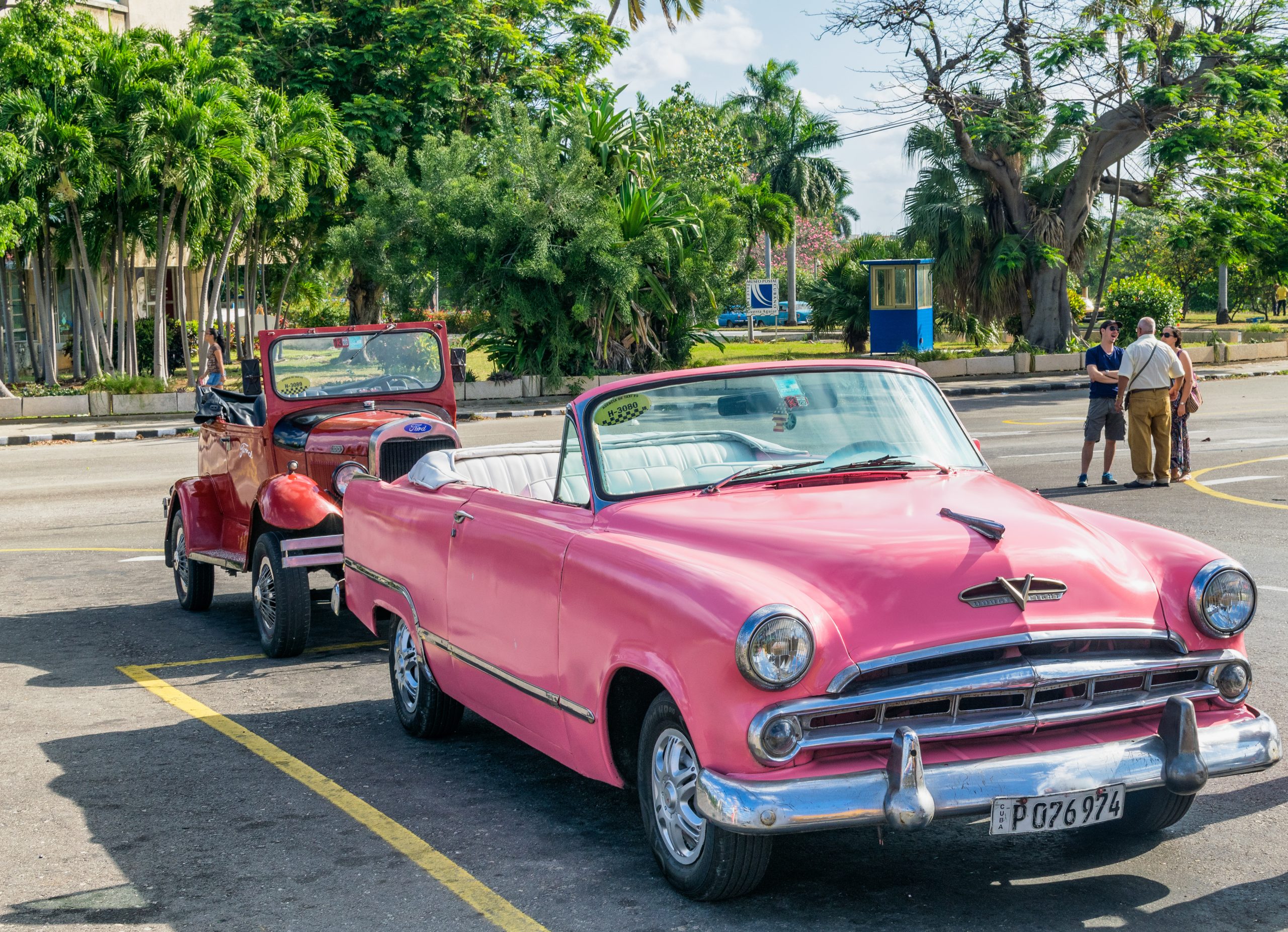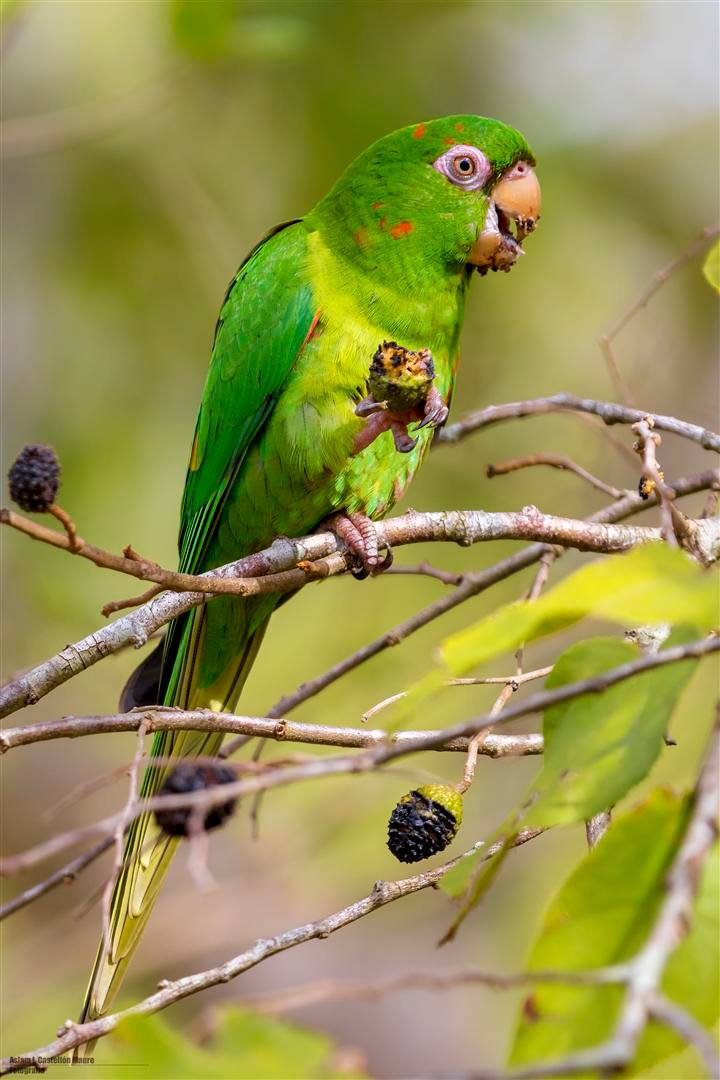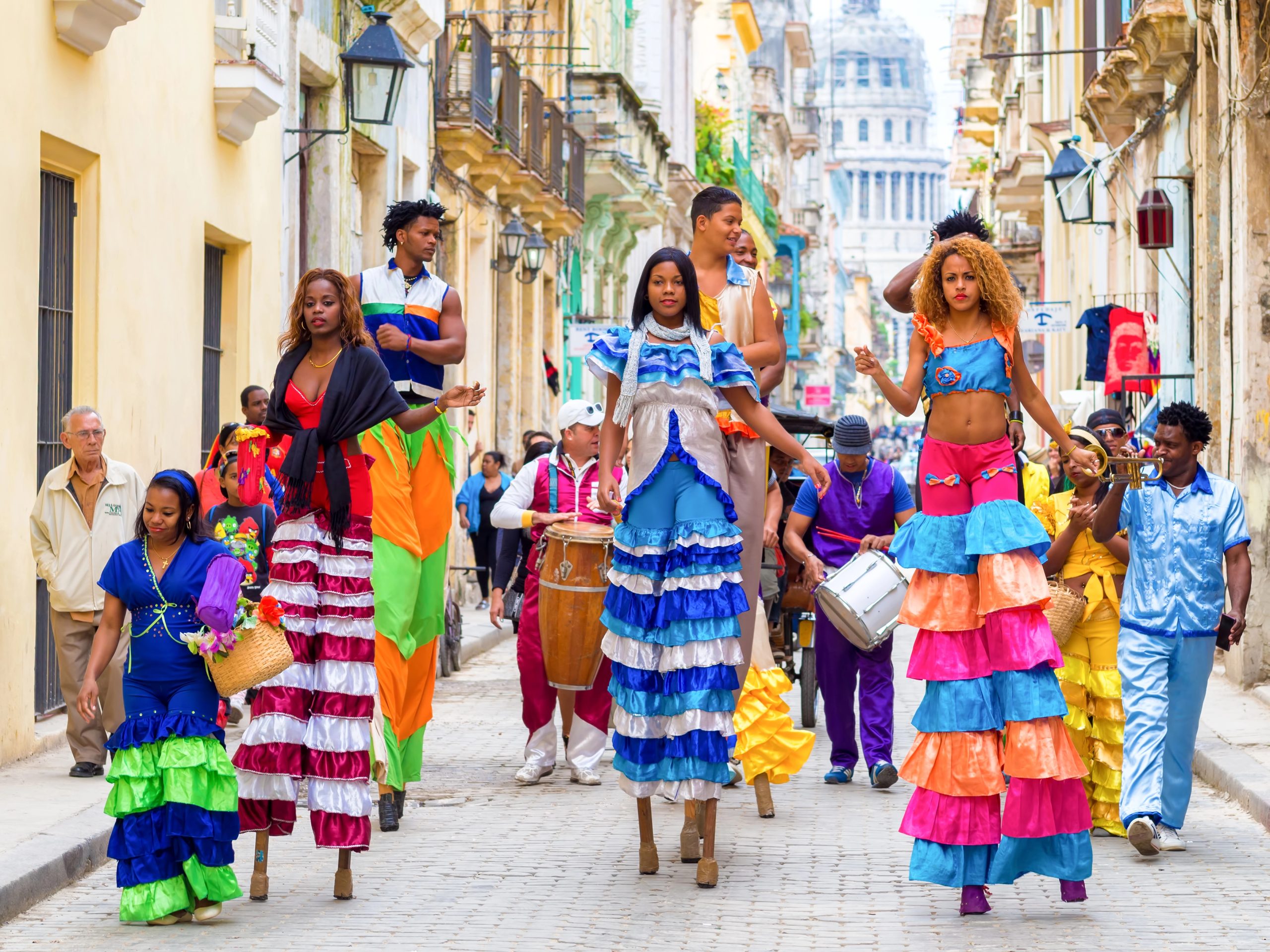Nestled in the heart of the Caribbean Sea, Cuba stands as a melting pot of diverse cultures, each strand intricately woven into the fabric of this captivating island nation. From the indigenous Taíno people who first called this land home to the Spanish colonizers and African slaves who left an indelible mark, Cuba’s rich tapestry has been colored by a myriad of influences. Even today, the echoes of these varied legacies reverberate through the island’s architecture, cuisine, music, and traditions, creating a harmonious symphony that celebrates the beauty of multiculturalism.
One of the most intriguing facets of Cuba’s cultural mosaic is its linguistic heritage. Embedded within the Spanish and English languages are remnants of the Taíno tongue, a subtle yet profound reminder of the island’s indigenous roots. Words like “barbecue,” “canoe,” “hammock,” and “tobacco” in English, as well as their Spanish counterparts “canoa,” “hamaca,” and “tabaco,” trace their origins back to the Taíno language, serving as a linguistic bridge between the past and present.
1. A Living Museum of Architectural Wonders
Cuba’s rich tapestry extends beyond its cultural diversity, manifesting itself in the architectural marvels that adorn the island’s landscapes. Recognized by UNESCO as World Heritage Sites, these iconic landmarks stand as guardians of Cuba’s storied past, inviting visitors to embark on a journey through time.
In the heart of Havana, the historic quarter of Old Havana (La Habana Vieja) captivates with its meticulously preserved colonial architecture and imposing fortifications, transporting visitors to an era when Spanish galleons ruled the high seas. Further afield, the picturesque town of Trinidad and the surrounding Valle de los Ingenios (Valley of the Sugar Mills) offer a glimpse into Cuba’s sugar-cane heritage, where the remnants of 18th and 19th-century plantations stand as silent witnesses to a bygone era.
Nature enthusiasts, too, will find their sanctuary in Cuba’s UNESCO-designated natural wonders. The Viñales Valley, a verdant expanse dotted with striking limestone hills (mogotes) and traditional tobacco farms, beckons with its breathtaking landscapes and age-old agricultural practices. Meanwhile, the Desembarco del Granma National Park and the Alejandro de Humboldt National Park safeguard Cuba’s rich biodiversity, providing a haven for countless rare and endemic species.
2. A Tapestry of Revolutionary Tales
No exploration of Cuba’s captivating allure would be complete without delving into the island’s revolutionary past. Fidel Castro, the iconic leader who defied the odds and survived an astonishing 600 assassination attempts, remains an indelible figure in Cuba’s modern history. His legacy, intertwined with that of his comrade-in-arms, the legendary Che Guevara, has left an indelible mark on the island’s psyche.
The Cuban Missile Crisis, a pivotal moment in the Cold War era, further underscores Cuba’s geopolitical significance. This tense standoff between the United States and the Soviet Union, fueled by the presence of Soviet missiles on Cuban soil, brought the world to the brink of nuclear catastrophe, forever etching Cuba’s name into the annals of modern history.
3. A Playground for Automotive Enthusiasts

For those with a penchant for classic automobiles, Cuba offers a truly unique and enchanting experience. The island’s streets are a veritable time capsule, where vintage American cars from the 1930s, 1940s, and 1950s continue to cruise alongside their modern counterparts. These lovingly maintained “almendrones,” as locals affectionately call them, are more than just relics of a bygone era; they are living embodiments of Cuba’s resilience and ingenuity, having defied the ravages of time and embargo through the sheer determination of their owners.
4. A Sanctuary for Nature’s Marvels
 Beyond its cultural and historical treasures, Cuba’s natural wonders beckon to be explored. The island boasts an astonishing 4,195 islands and cays, each a unique jewel in the Caribbean’s crown. From the pristine beaches of Cayo Coco to the lush mangrove forests of Jardines de la Reina and the Canarreos Archipelago, Cuba’s diverse ecosystems offer a sanctuary for a wealth of flora and fauna.
Beyond its cultural and historical treasures, Cuba’s natural wonders beckon to be explored. The island boasts an astonishing 4,195 islands and cays, each a unique jewel in the Caribbean’s crown. From the pristine beaches of Cayo Coco to the lush mangrove forests of Jardines de la Reina and the Canarreos Archipelago, Cuba’s diverse ecosystems offer a sanctuary for a wealth of flora and fauna.
One of Cuba’s most captivating residents is the diminutive bee hummingbird (Mellisuga helenae), the world’s smallest bird species. Weighing less than a U.S. penny and measuring a mere 2-2.4 inches (5-6 cm), this iridescent marvel flits among the island’s forests and gardens, sipping nectar with its specialized beak and captivating all who witness its agility in flight.
5. A Tapestry of Rhythms and Melodies
 No exploration of Cuba would be complete without immersing oneself in the island’s vibrant musical heritage. The pulsating rhythms of Rumba, born in the 19th century from the cultural fusion of enslaved Africans, reverberate through the dance halls of Matanzas and Havana, telling tales of resilience and joy through the suggestive movements of the dancers.
No exploration of Cuba would be complete without immersing oneself in the island’s vibrant musical heritage. The pulsating rhythms of Rumba, born in the 19th century from the cultural fusion of enslaved Africans, reverberate through the dance halls of Matanzas and Havana, telling tales of resilience and joy through the suggestive movements of the dancers.
Beyond the Rumba, Cuba’s musical tapestry is woven with a myriad of genres, each reflecting the island’s diverse cultural influences. From the infectious beats of Salsa and Mambo to the soulful melodies of Trova and the elegant Danzón, Cuba’s musical landscape is a veritable feast for the senses, inviting visitors to lose themselves in the intoxicating rhythms that have captivated audiences around the globe.
6. A Haven for Literary Legends
Cuba’s allure extends beyond its physical boundaries, having captured the hearts and minds of literary giants throughout history. Ernest Hemingway, the renowned American author and Nobel laureate, found his muse in the island’s vibrant landscapes and lively culture. His former residence, Finca Vigía, now a museum dedicated to his life and work, stands as a testament to the enduring bond between Cuba and this literary titan.
Hemingway’s love affair with Cuba was not merely confined to the written word; it was also a celebration of the island’s libations. The author’s favorite haunts, such as El Floridita and La Bodeguita del Medio in Havana, became legendary in their own right, serving as the backdrop for his legendary drinking sessions and the creation of iconic cocktails like the Hemingway Daiquiri.
A Tapestry of Sporting Passions
Cuba’s vibrant tapestry is not merely confined to its cultural and historical realms; it extends to the realm of sports as well. Baseball, the quintessential American pastime, has found a fervent following on the island, with Cubans embracing the game with a passion that rivals that of their northern neighbors.
The island’s love affair with baseball dates back to the 1860s, and over the years, a multitude of Cuban players have graced the diamonds of Major League Baseball, showcasing their exceptional talent and skill. From the legendary Rodrigo Alvarez, who defected in 1963, to the current crop of Cuban superstars, the island’s baseball legacy continues to captivate fans around the world.
Beyond baseball, Cuba’s sporting tapestry is woven with the threads of boxing, a discipline in which the island has produced a staggering 78 Olympic medals, including 41 gold. The island’s passion for the sweet science is palpable, with an estimated 19,000 of Cuba’s 99,000 athletes dedicated to the art of pugilism.
7. A Tapestry of Traditions
Cuba’s rich tapestry is not merely confined to the realms of culture, history, and sports; it extends to the very fabric of daily life, manifesting itself in a myriad of cherished traditions that have been passed down through generations.
One such tradition is the Cuban penchant for playing dominoes, a beloved pastime that spills onto the streets, where neighbors gather in impromptu outdoor parlors to engage in friendly yet fiercely competitive games. The clinking of domino tiles serves as the soundtrack to many a Cuban weekend, a testament to the island’s enduring love for this simple yet captivating game.
Another tradition that captures the essence of Cuban culture is the island’s unique approach to ringing in the New Year. On Nochevieja (New Year’s Eve), Cubans engage in a series of rituals designed to bid farewell to the old year and usher in the new with a sense of hope and renewal. One such ritual involves the burning of rag dolls, or “muñecos,” which represent the troubles and hardships of the past year. These symbolic effigies are paraded through the streets, their eventual burning signifying the shedding of the old and the embrace of the new.
8. A Tapestry of Educational Excellence
Despite the economic challenges it has faced, Cuba has managed to weave a tapestry of educational excellence, achieving remarkable strides in literacy and healthcare. The island boasts an impressive literacy rate of 99.7%, a testament to its unwavering commitment to education and the empowerment of its citizens.
Cuba’s healthcare system, too, has garnered global recognition for its accessibility, quality, and cutting-edge medical research. From the development of groundbreaking vaccines, including two COVID-19 vaccines with over 90% efficacy, to the pioneering of a lung cancer vaccine, Cuba’s medical prowess has solidified its position as a leader in the field of healthcare.
9. A Tapestry of Economic Resilience
In the face of economic challenges and embargoes, Cuba has woven a tapestry of resilience, adapting and innovating to overcome adversity. One such adaptation is the island’s unique dual currency system, which distinguishes between the Cuban Convertible Peso (CUC) and the Cuban Peso (CUP).
The CUC, pegged to the U.S. dollar, caters primarily to the tourism industry, facilitating transactions for visitors to the island. Meanwhile, the CUP serves as the currency for everyday expenses among Cuban citizens, reflecting the nuances of the island’s economic landscape and the interplay between its domestic and tourism sectors.
10. A Tapestry of Enduring Spirit
As one immerses oneself in the captivating allure of Cuba, what becomes abundantly clear is the enduring spirit of its people. Through the tapestry of their culture, history, traditions, and resilience, Cubans have woven a narrative that transcends mere facts and figures, inspiring awe and admiration in all who bear witness to their indomitable spirit.
Whether it’s the ingenuity displayed in maintaining the island’s iconic vintage cars, the passion that fuels their love for sports and music, or the unwavering commitment to education and healthcare, the Cuban people have demonstrated a remarkable ability to embrace adversity and emerge triumphant.
Conclusion
In this tapestry of Cuba’s allure, each thread tells a story, each color represents a facet of the island’s rich heritage, and each intricate pattern serves as a testament to the indomitable spirit that has shaped this Caribbean gem. To experience Cuba is to immerse oneself in a living, breathing tapestry, one that captivates the senses, ignites the imagination, and leaves an indelible mark on the soul.
—
Be sure to tag us in your photos and videos @resortcaribbean, and follow our socials: Instagram, Facebook, YouTube.







![What You Need to Know before Visiting Azul Beach Resort Negril Jamaica Gourmet All-Inclusive [Resort Review] Azul Beach Resort Pool](https://resortcaribbean.co/wp-content/uploads/2021/09/20210828_091210-2-100x70.jpg)
![Visiting Ocean Coral Spring – One of Jamaica’s Most Famous Resorts [Resort Review] Visiting Ocean Coral Spring - One of Jamaica's Most Famous Resorts](https://resortcaribbean.co/wp-content/uploads/2021/11/20211106_155809-scaled-e1716408051807-100x70.jpg)